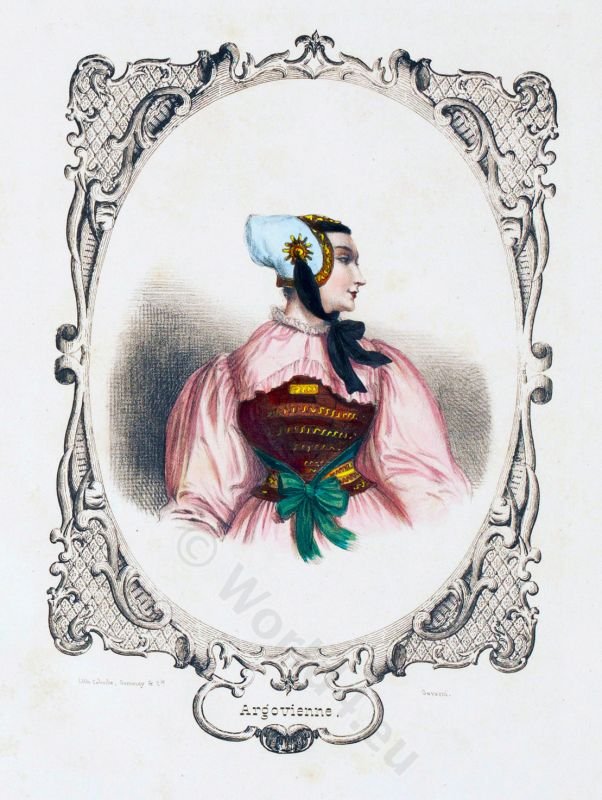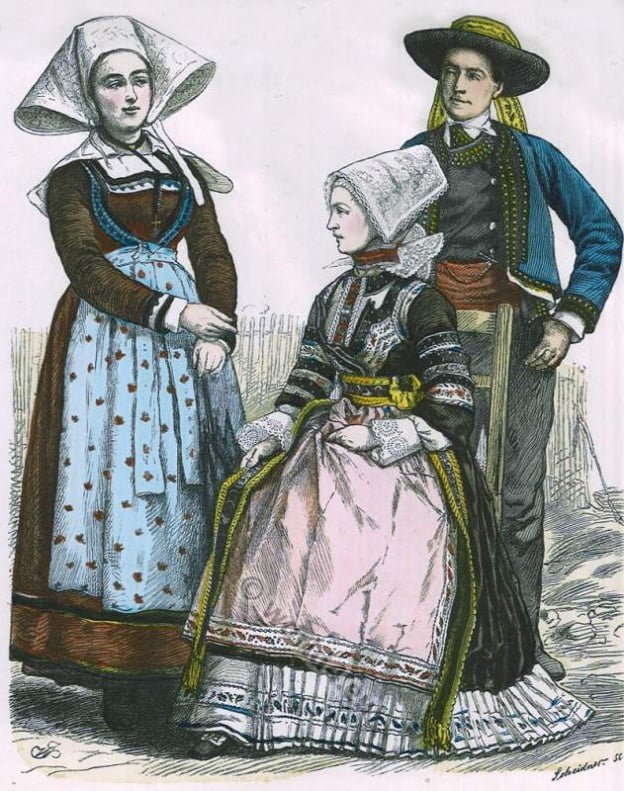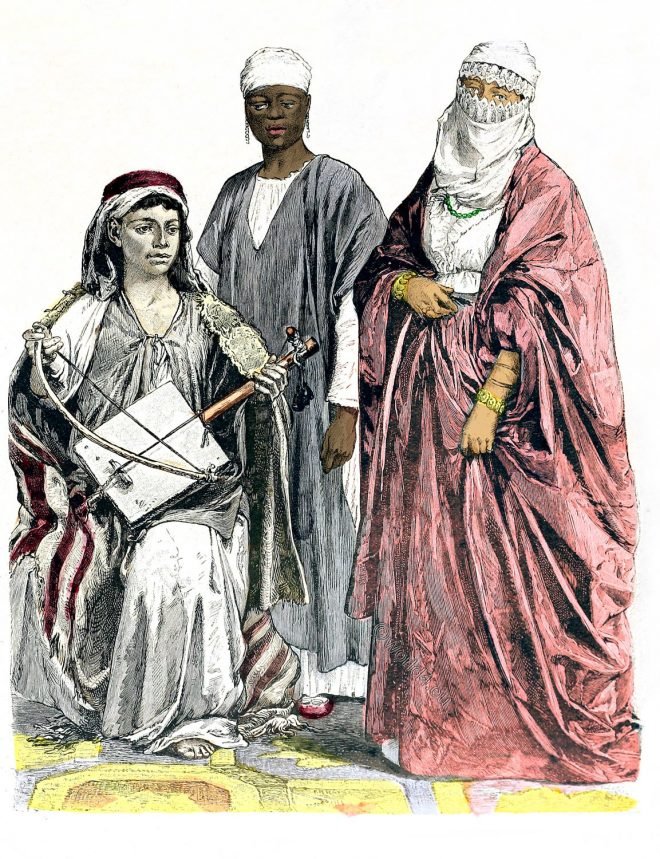The peoples of the Austro-Hungarian monarchy.
Category: 19th Century
Dalmatian folk costumes. Morlakian peoples.
Traditional ethnic costumes of Maurowalachen, Dalmatian folk costumes. The peoples of the Austro-Hungarian monarchy. Published by Johann Nepomuk Vernay, Austria, 1896.
Bosnian traditional costumes in 1880
Bosnian traditional costumes. The peoples of the Austro-Hungarian monarchy. Published by Johann Nepomuk Vernay, Austria, 1896.
Woman from Bern in wedding dress, 1850.
[su_note note_color=”#e3fdbf”] Woman from Bern in wedding dress, 1850. [/su_note] Fiancée de Bernes. According to an illustration by Paul Gavarni. From the book: Costumes historiques pour travestissements par Paul Gavarni… Read More
Woman from Aargau, Argovienne Switzerland.
Costumes historiques pour travestissements par Paul Gavarni.
Traditional clothing from Brittany in 1850.
The Munich Picture Gallery 1848 to 1898. On the history of costumes.
Residents of Port Said with Water Seller. Traditional Egypt clothing.
A woman with a veil and headscarf wearing a precious cloth cord embroidery on the arm, to a light tunic abaya.
Traditional Egypt costumes. Bedouin girl, Fruit Vendor, Runner.
A Bedouin girl in a shirt-like garment, called “mig wal”. Next to her is an Egyptian Fruit Vendor. She wears a cape or cloak, jilbab, Jilaabah called. Her head is covered by a veil, the niqab.
Dress of Tambourine player. Veiled water wearer and Servant in 1850.
Tambourine player in the jilbab. Veiled water wearer in a chador. Servant with a turban, tarboosh, vests, harem pants belted with a wide cloth that Sal Sapik, (SAL û Sapik “pants and shirt”).
Bedouin musician. Nubian slave. Egyptian traditional street clothes.
A young Bedouin with Kufiyya, Jilbab and jacket. Nubian slave girl wearing a caftan over a light of woolen dress. Egyptian woman in street clothing.









